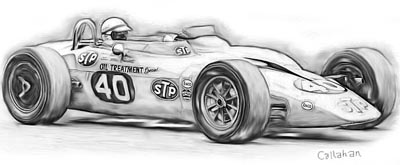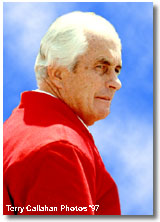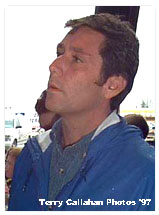
Change: Another Indy TraditionINDIANAPOLIS: The Indianapolis Motor Speedway. There is no place like it on earth. I remember walking up the steep concrete stairs and into the grandstands in turn one for the first time in 1963. I was an excited six-year-old boy holding my dad's hand. It was a qualifying day. The race cars were already on the track practicing before we arrived. We could hear them long before we reached the Speedway grounds. When I finally saw the machines that caused this vibrating harmony, I was hooked. My lifelong addiction to motorsports had begun.I remember my father telling me stories of all the races he had attended. He never said it, but it is obvious to me now he saw those drivers as heros. His heros became my heros. The tradition of The Indianapolis 500 had been passed to a new generation. During my first eight yearly visits to the Speedway I saw many changes. The roaring roadsters I saw the first year were quickly replaced by rear engine screamers within two years. The next few years saw turbine-powered "whoosh mobiles" mixed with the now dominant rear engine models. Looking back, Parnelli Jones was the first driver I saw on the track in ‘63. His front engine roadster seemed like a jalopy when compared to the turbine he raced in ‘67.
 Parnelli Jones, 1967 STP Turbine
The radical changes in design which I witnessed in the sixties vanished in the late seventies. Through the eighties and into the nineties, the changes in car design were subtle. The only thing that changed in the last twenty years was the cost. Yes, these were changes, but it wasn't anything the fans could see or touch. Enter Tony George, President of the Indianapolis Motor Speedway and grandson of the businessman who saved the Speedway after World War II, Tony Hulman. Changes are back at the Indianapolis Motor Speedway.
This most recent change has been the topic of many discussions in racing circles. There has been criticism. There is rarely praise for Tony George. All through the nineties, Tony George and the Speedway corporation have made changes to the facilities. They were visible changes like: all new suites added along the inside of the track's main straightaway, track resurfacing (several), warm up lanes, increased seating; golf courses, viewing mounds, and higher walls in order to run NASCAR. Was this most recent change (to shorten practice) necessary? You bet it was. Tony George is following the lead set by Roger Penske twenty five years ago. Practice laps cost money. Two years ago when CART teams participated in the Indy 500, it was estimated that a practice lap cost $400. CART sponsors pumped big money into the sport which made practice laps affordable. The IRL has been slow in obtaining the big sponsors. Teams in the IRL operate on a tenth of the budget of top CART racing teams. Even though test laps cost less in the IRL, there is simply not enough funding for the teams to turn laps for two straight weeks (with the possible exception of Team Menard, Conseco/A.J. Foyt, and Treadway Racing.) So, for those who are concerned or critical about all the changes at the Indianapolis Motor Speedway......don't be. The Speedway is dormant for 48 weeks a year and stills pays out the two biggest purses in motorsports. One additional week of inactivity won't ruin Indy. Review the history. Indy has seen lots of changes long before my first visit in 1963 and withstood them all. She became stagnant in the seventies and eighties. The changes are back. Get ready for the next millennium of racing at Indianapolis.
Racing Photos |
Racing Art |
Real Audio  |





